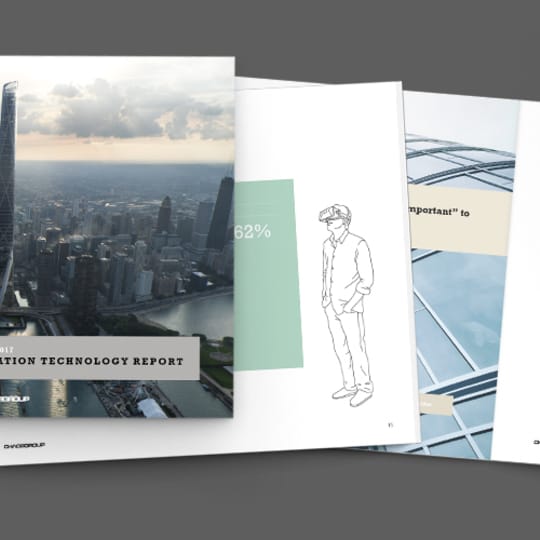In September 2017, Chaos Group conducted an online survey of architecture and architectural visualization professionals. The questionnaire asked about the types of technology in use at their firms, the challenges of their workplace, and their attitudes and expectations towards the future of the industry. The survey reached 5,769 respondents from over 70 countries, reflecting the global scale of today’s architecture and architectural visualization practices. Those surveyed included everyone from freelancers and employees at small studios, to multinational firms with thousands of staff.
The objective was to provide a snapshot of the technology trends in architecture and archviz, and to identify the innovations that are rapidly changing the industry.
Key findings
Fast changing technologies, including the widespread adoption of BIM and VR, have had a profound impact on the industry
Increased demand for high-end photorealistic visuals and keeping pace with new technologies are major factors in a competitive industry with tight budgets and quick deadlines. VR has introduced a new way to design, collaborate and convey architecture, bringing with it more opportunities for large architectural firms as well as individual freelancers.
The majority of architecture and architectural visualization firms will use VR in 2018
Today, virtual reality adds a new dimension to the mainstream 3D software used in architectural visualization. Because of VR’s unique ability to represent space at human scale, it’s already playing a significant role in architecture, and its usage is expected to increase rapidly in 2018. Though firms of all sizes are currently working in VR, large firms are seeing the most widespread adoption and using it on multiple projects.
Cloud rendering usage to triple in 2018
While most architectural visualization rendering is accomplished in-house, there is growing interest in cloud rendering. Increased speed and the ability to do more iterations on a project are the most appealing aspects of rendering on the cloud. Depending on barriers such as cost and ease-of-use, the use of cloud rendering could double mid-year and even triple by the end of 2018.
Survey participants
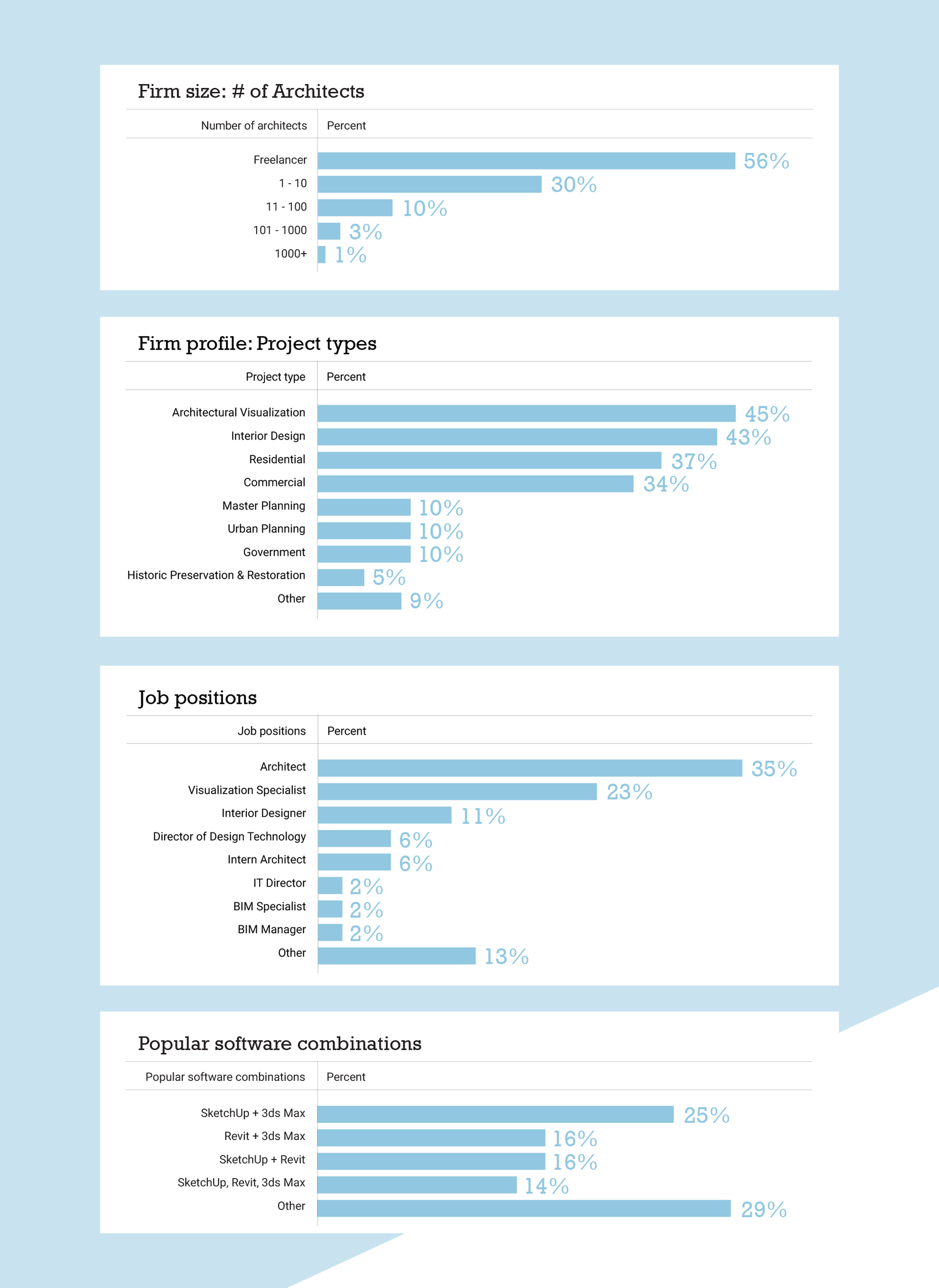
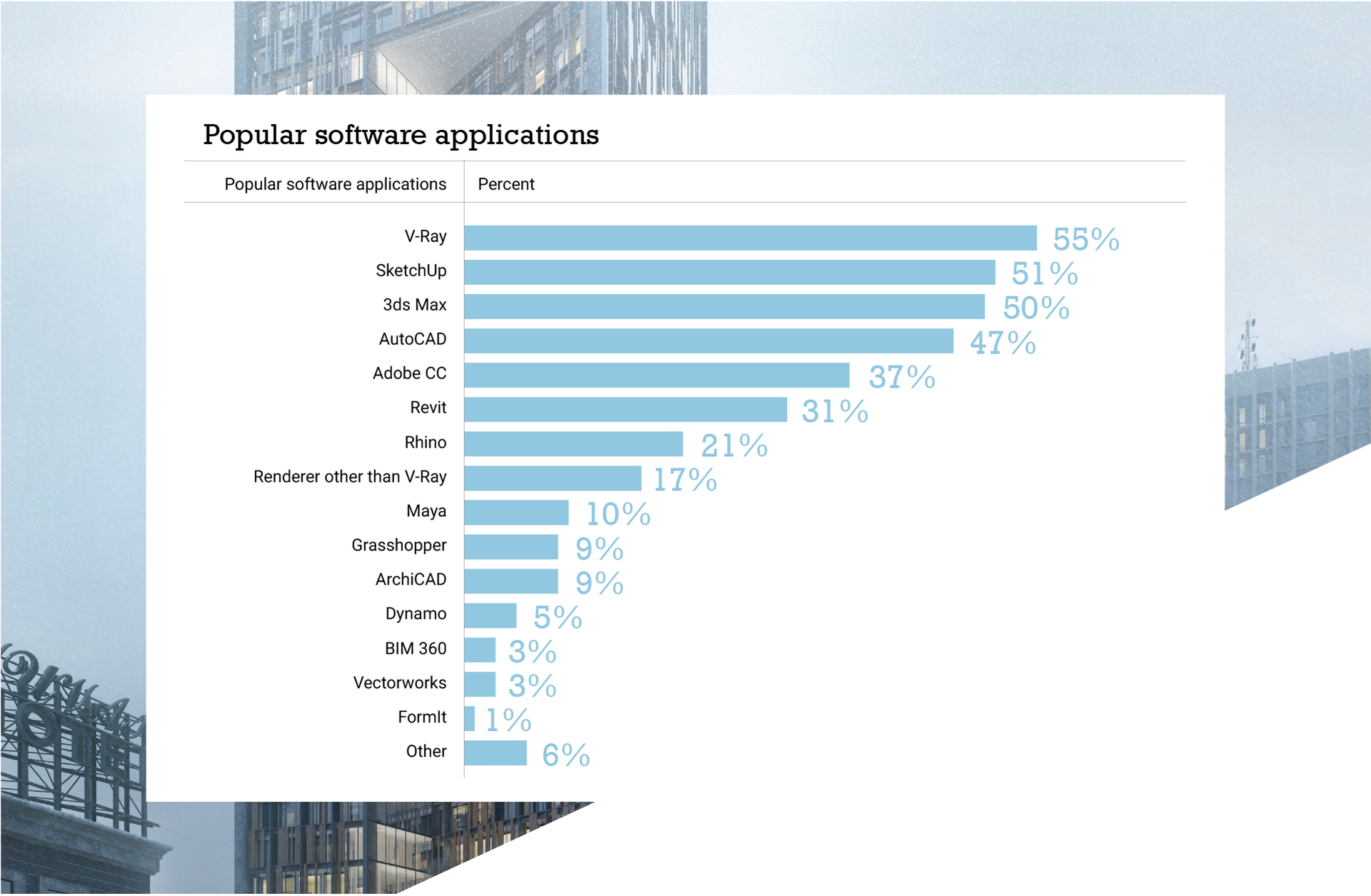
Industry changes & challenges
Increased reliance on technology is the biggest change in architecture and architectural visualization in the past three years.
Respondents from companies of all sizes confirm the most noticeable change in the last few years is the increased reliance on recently introduced technologies such as BIM and VR. 70% of those surveyed noted that increased reliance on technology is the number one change in the industry over past three years, almost twice as many as the 36% who stated an increased demand for sustainable designs.
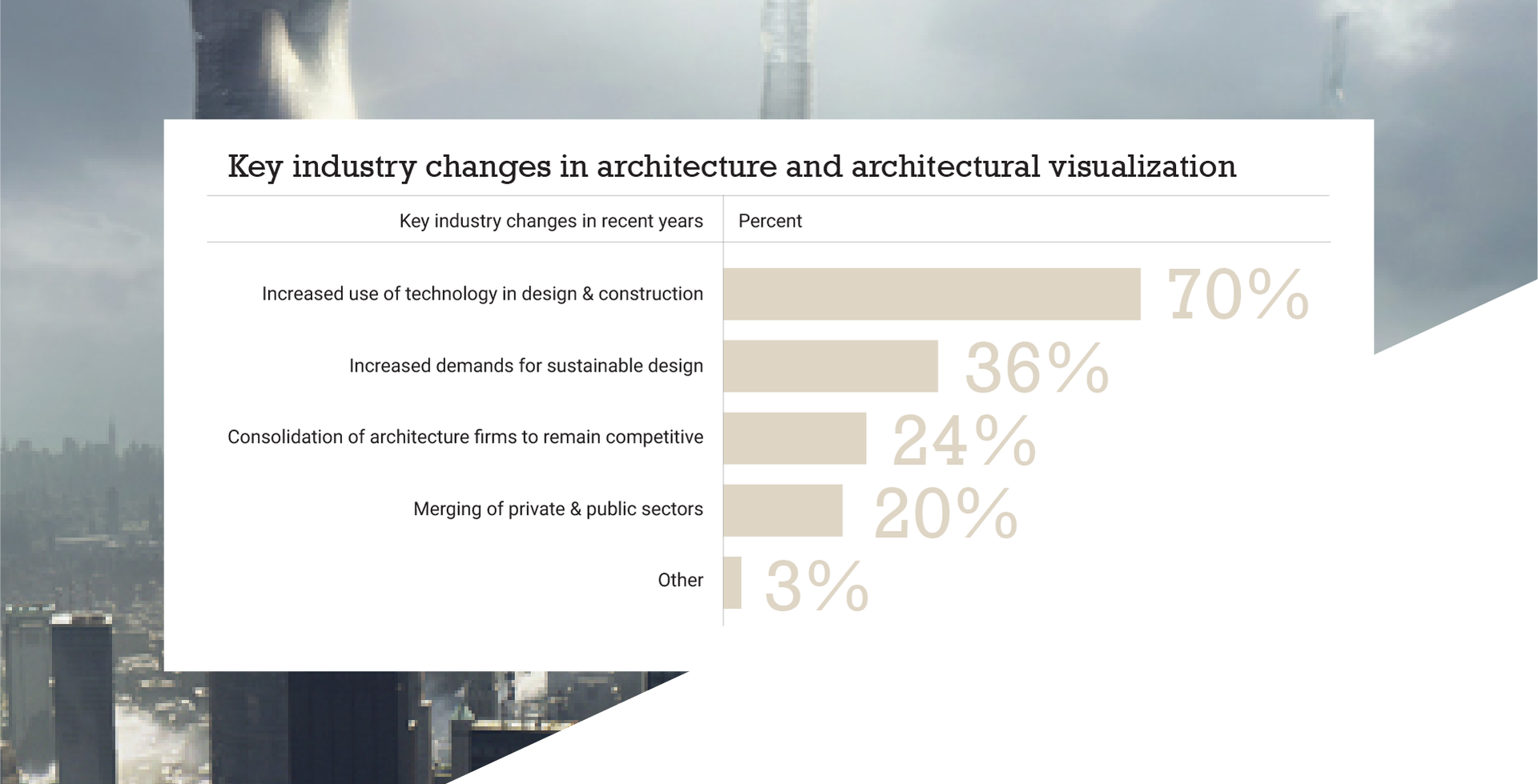
While tight deadlines and limited budgets are always top concerns, 43% of respondents noted that increased demand for high-end and photorealistic content is also a major challenge. 85% of respondents stated that 3D rendered imagery is “very important” to “critical” for winning projects.

Virtual Reality
Over two-thirds of architecture and architectural visualization professionals plan to use VR in 2018.
While 3D tools have been mainstream for architects and visualization artists for some time, the introduction of virtual reality offers new ways for them experience the scale and spatial quality of their designs. More than half of those surveyed have used VR or are currently experimenting with VR on a project.
80% of VR adopters are using it on multiple projects.
Of those already using virtual reality, 80% have used it on multiple projects, suggesting that VR is beginning to play a more significant role in architectural design and visualization workflows.
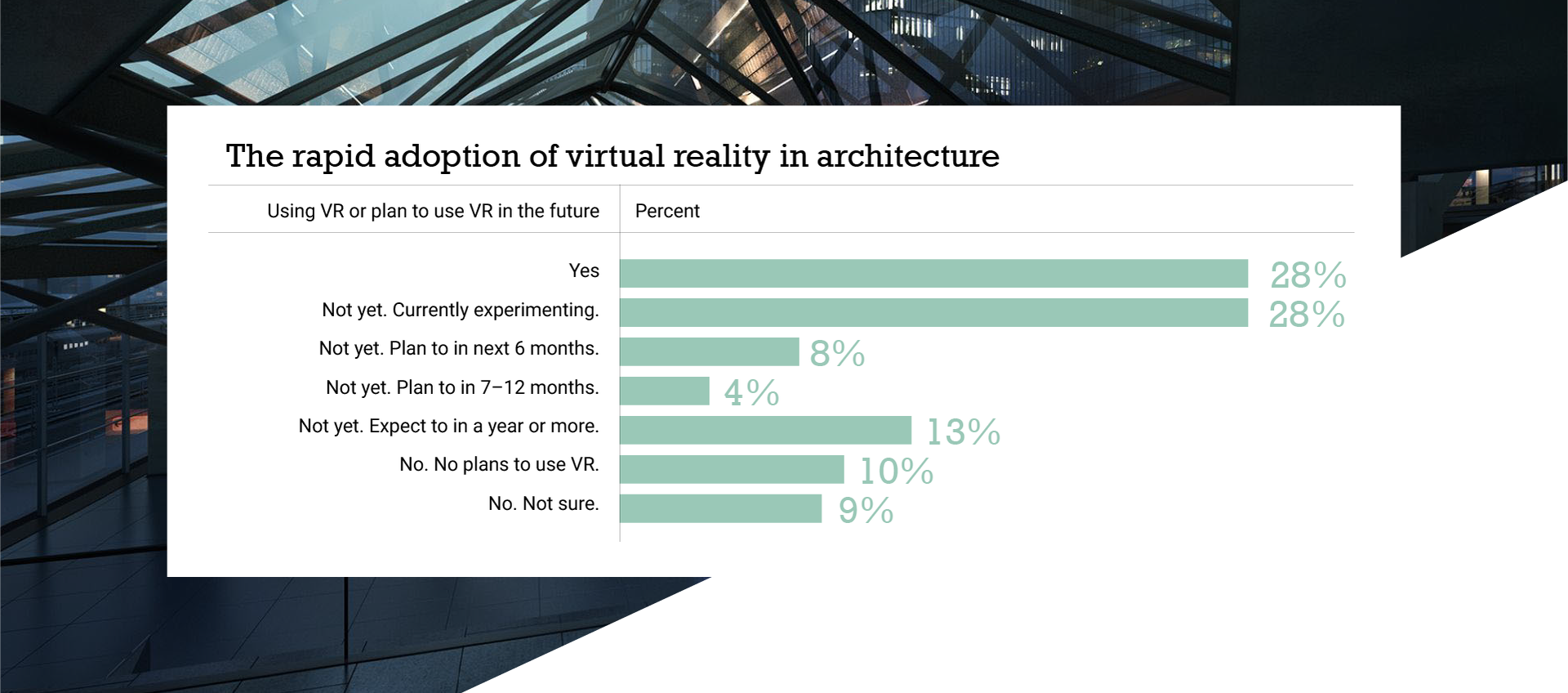
Architecture is fundamentally spatial, and all its visualizations, from facade plans to animations, have been two-dimensional so far. VR is the first medium that can transmit the spatial qualities of a building. Now the industry must figure out the means of communication in a new medium which is a dimension bigger than familiar platforms or products.
Attila Cselovszki, Brick Visual CTO
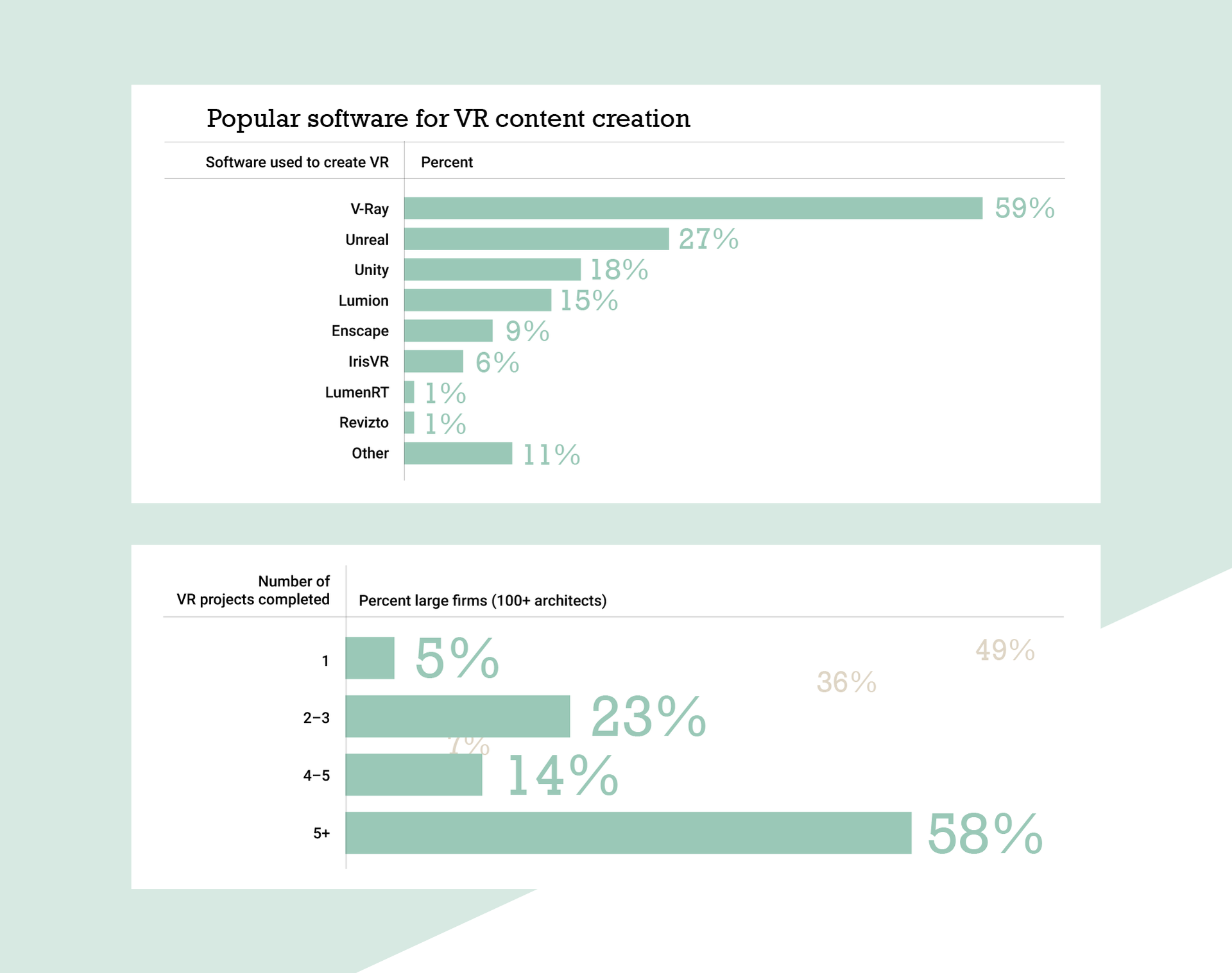
Read how Brick Visual uses VR in its visualization work and treat it more like a service than a product.
Find out how Bipolar Studio employed a CG bunny to create a VR experience for Airbnb.
Most large architectural firms are already using VR.
Large architecture firms have embraced VR at a much higher rate than smaller firms and freelancers. 62% of large firms are currently using VR, and more than half of those have already used VR on five or more projects.
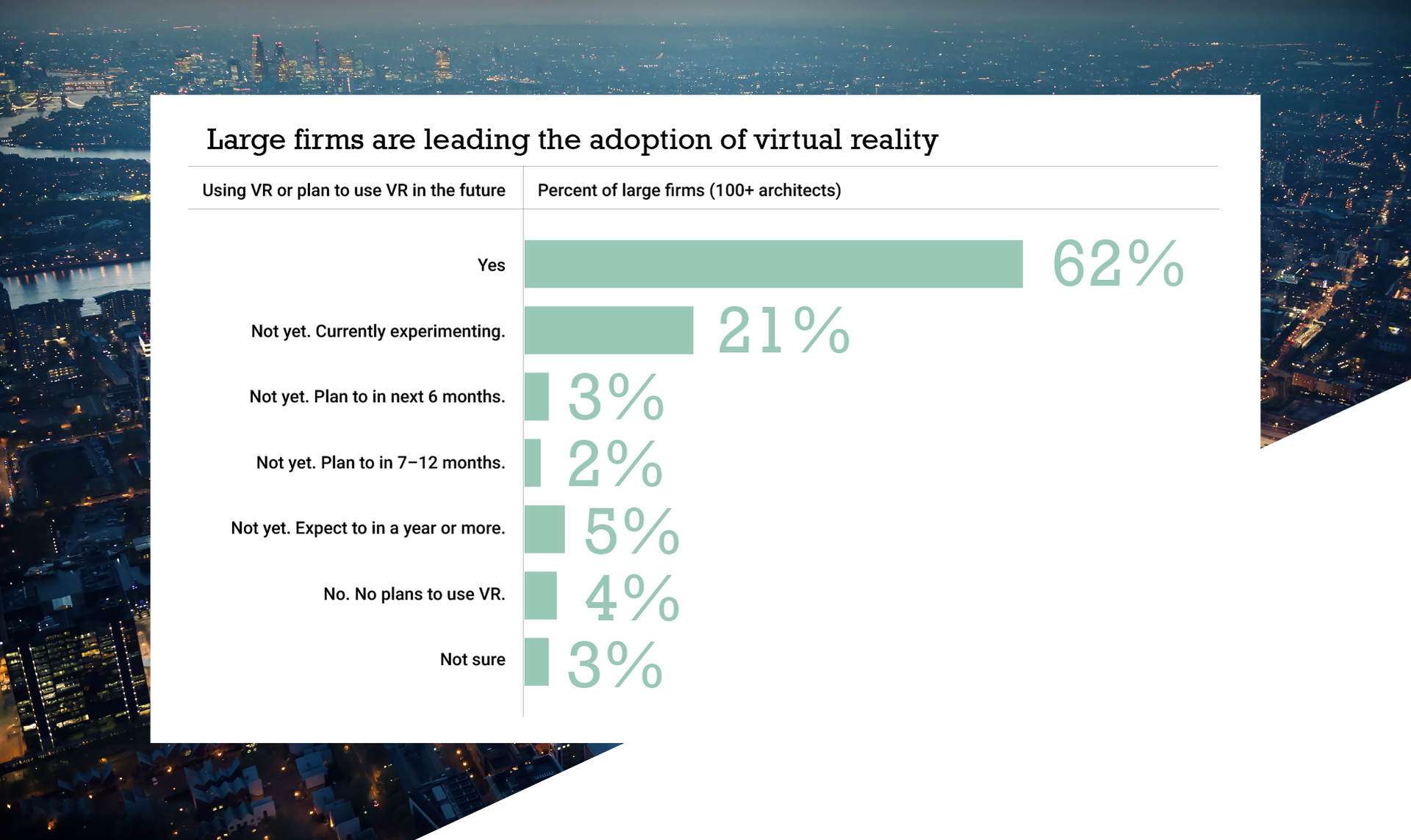
Cloud Rendering
Cloud rendering usage could triple in 2018.
According to the survey, cloud rendering demand could increase significantly in 2018, with the potential for 233% growth by mid-year, and up to 367% growth by the end of 2018. These numbers could grow even further if any undecided respondents try cloud rendering in 2018. A majority of architectural rendering remains in-house. Although the current industry standard is to render using an internal render farm, a combined 34% of respondents use external render farms and cloud services to complete their projects.
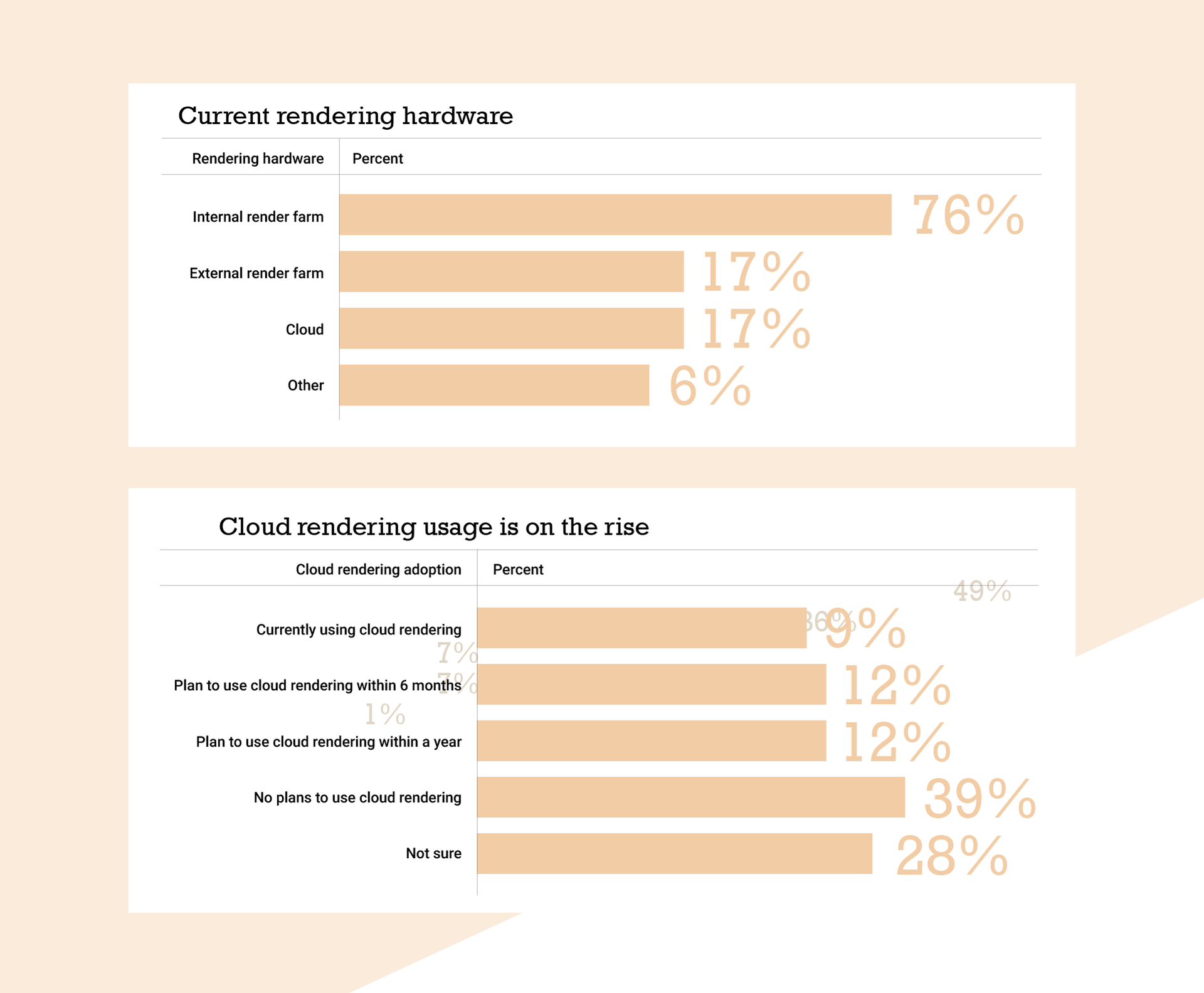
Reducing render time is the number one benefit of cloud rendering. Over 50% of respondents consider shorter render times as the main strength of cloud rendering. The majority of respondents also agree that the ability to work on more projects and create numerous iterations is a key benefit of cloud rendering.

Chaos Group has recently launched an early access program for V-Ray Cloud. Integrated directly in V-Ray, users can render to the cloud with a single click as a natural extension of their creative process. There's no need to configure hardware or set up virtual machines as V-Ray Cloud takes care of all this automatically. Read more about V-Ray Cloud >

